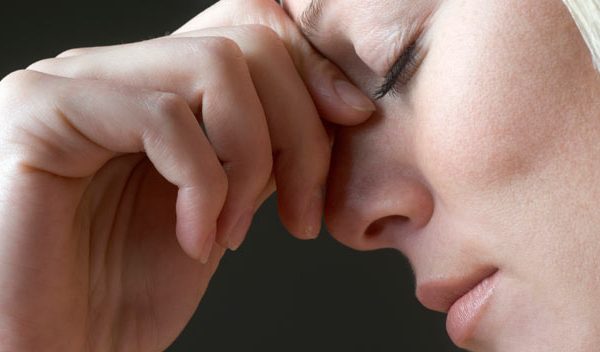Even if you aren’t addicted to or abusing opiates, if you are taking them chronically for one reason or another, you will likely experience some sort of withdrawal syndrome when you stop. Opiates are often prescribed to patients for several months or more when they are experiencing pain, and this can often lead to the issue of a withdrawal syndrome occurring afterward.
If you are experiencing opiate withdrawal for whatever reason, you can receive medication to help minimize your symptoms, and sometimes, individuals are slowly tapered off the drug. But you will still experience a withdrawal syndrome of some kind, and it is important to know the opiate withdrawal stages you’ll go through.
Stage One
The initial stage of opiate withdrawal is usually considered the most painful and uncomfortable. Opiate withdrawal can be extremely painful, and this stage is where the most muscle, joint, and bone pain is experienced. The opioid drugs given to patients by doctors are “prescription medications used to reduce pain,” but even heroin and other illicit opioids can cause an absence of pain (NIDA Teen). This is why the initial stage can be so uncomfortable.
Stage one usually includes these symptoms:

During withdrawal, anxiety and agitation are usually among the first symptoms people experience.
- Agitation
- Anxiety (sometimes causing panic attacks)
- Sweating
- Insomnia
- Loss of appetite
- Muscle, bone, and joint aches and pain
- Runny nose
- Increased lacrimation (or crying)
- Yawning
In most cases, the first stage feels similar to a very bad case of the flu. The individual will also be in pain, very anxious, and uncomfortable. It can be difficult for the individual to sleep or eat anything. This stage is the worst for most patients.
The initial stage usually lasts a few days, around one or two in most cases. In some situations, it can last longer, but most individuals experience a shorter initial stage. Because it is so uncomfortable, however, it is the stage where most individuals consider relapse and where the danger for this is highest. Patients in the initial stage need to be monitored for signs of relapse, especially if they are in an outpatient program and may have access to drugs outside of their treatment facility. Cravings will also occur during this stage.
For someone who is not addicted to opiates but is just going through withdrawal, cravings will not be a problem, but they may consider going back on the medication if they understand that this is the reason they are going through withdrawal. Either way, it will be the most difficult stage to get through. Once it ends, though, many patients think that their withdrawal is finished which could not be further from the truth.
Stage Two
An individual will likely still feel pain during stage two, but it will lessen somewhat to a much more bearable point. It is likely that the individual will feel much better knowing that the worst is over, but there are still many other symptoms to consider which can be difficult and uncomfortable in their own right. Patients should continue to remind themselves why they are stopping their opiate use.
Stage two symptoms include:
- Diarrhea
- Goosebumps
- Chills
- Abdominal cramps
- Nausea
- Vomiting
During this time, it will still be hard for the individual to eat, especially solid foods. The diarrhea and vomiting can make an individual very dehydrated though so it is important for the patient to drink lots of water and to try to eat somewhat to keep up their strength. While this stage isn’t as uncomfortable as stage one, it can still be difficult on the body, and the individual is suggested to continue resting at this time.
Stage two usually lasts one to three days, the time it takes depending on several factors. While a person’s tolerance and intensity of opiate use (how high the doses are) are both important factors in shaping the length of time they spend in withdrawal, the drug itself can cause symptoms that are shorter or longer in length of time experienced.
Stage two is uncomfortable in its own right, and many individuals feel extremely relieved when it seems to be over. But it is important to remember that there are really three stages to most opiate withdrawal syndromes.
Stage Three
After the vomiting and diarrhea are over, many people think they are in the clear and over their withdrawal period. Some individuals may even start to go back to work and school or try to continue into their regular life. However, this stage can also cause problems for the opiate user, and knowing not to go back to your full schedule immediately can be very helpful to you.
Nausea, anxiety, and insomnia may still occur at this point. A person may also feel some depression and other symptoms. For the most part, these are much less intense than the symptoms individuals feel during the other stages, but they still should not be ignored. While inpatients who are finishing up withdrawal may be asked to stay in the treatment center a few more days, others will be warned not to go back to their full lives immediately.
Taking small steps like light exercise, making sure to eat every day, and perhaps spending time doing low-stress, comforting activities is key. Do not throw yourself back into work immediately or anything else incredibly strenuous. The third stage could last for a day or longer, and even if your physical symptoms have cleared up, you may still notice lingering psychological symptoms as well as cravings. Make sure you continue to take care of yourself, even during stage three.
How Long Do the Stages Last?
It changes with every drug, person, and amount of the drug abused. For example, according to the NLM, “Symptoms usually start within 12 hours of last heroin usage and 30 hours of last methadone exposure.” In addition, the drug itself and other factors can affect the length of time for the entire withdrawal syndrome. “Short-acting opiates tend to produce more intense but briefer symptoms” (Harvard).
For the most part, each stage lasts a few days or so and the entire syndrome lasts about a week or more. The opiate withdrawal stages you go through will be uncomfortable and sometimes long, but you will get through them with the proper care from your doctor, your loved ones, and yourself.









